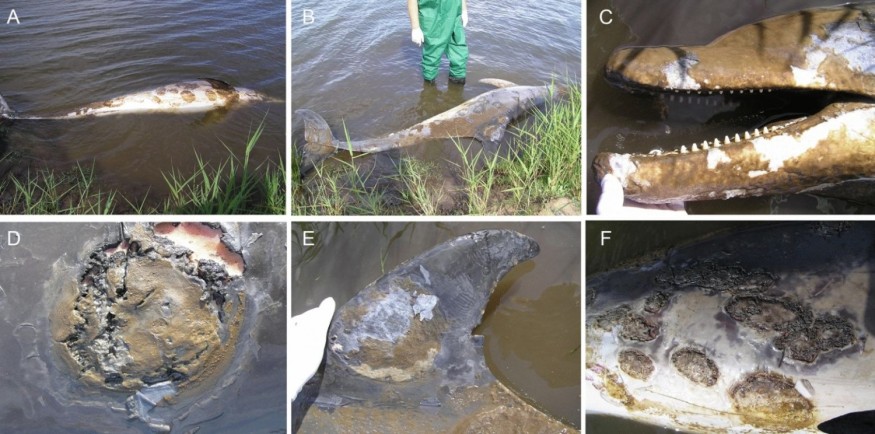Experts identified the novel skin disease that is infecting dolphins in a groundbreaking discovery. The scientists at The Marine Mammal Center in Sausalito, CA, and their international colleagues said that the mysterious skin disease is due to climate change.
The team from the world's largest marine mammal hospital first discovered that some dolphins have skin diseases in 2005 which they linked to a cause that affects other dolphins worldwide. They said that the salinity of the water has changed because of climate change, leading the dolphins to develop patches or lesions on the skin across their bodies that covers up to 70% of their skin.

Mysterious Skin Disease on Dolphins
The study, published in Scientific Reports, showed that the novel skin disease has an outbreak in Alabama, Florida, Australia, Mississippi, Louisiana, and Texas in the past few years. They said that these locations have record sudden and drastic salinity changes in the waters that must have caused the skin disease.
Generally, dolphins are used to seasonal changes in the salinity level of their marine habitat, but these mammals do not live in freshwater.
According to Phys.org, the coastal waters are slowly turning into freshwater because of the high frequency of rainstorms, hurricanes, and cyclones, which were preceded by drought conditions that dump unusual volume of water into the coastal waters.
Scientists predicted that because of climate change, there will be more extreme storms which could result in freshwater conditions that could last for months and thereby causing more frequent and severe disease outbreaks in dolphins.
"This devastating skin disease has been killing dolphins since Hurricane Katrina, and we're pleased to finally define the problem," said the Marine Mammal Center's chief and study co-author Dr. Pádraig Duignan.
ALSO READ: Toxicants in Whales and Dolphins Traced Back to Fossil Fuels & Single-Use Plastics
Implications of the Study in Australia's Current Outbreak
According to Earth.com News, the study has significant implications on Australia's current outbreak that has threatened the Burrunan dolphins living in the area. Researchers said that their study could provide the information necessary to diagnose and treat affected animals. The dolphins have a poor survival rate, especially those exposed to freshwater for a longer time.
Reports have said that the disease was first observed in 40 bottlenose dolphins in New Orleans in 2005 after Hurricane Katrina. According to Dr. Dulngan, that the warming ocean temperatures have affected marine animals worldwide. But using the data from the study, scientists can come up with possible mitigations to treat the dolphins and prevent more of them from getting the disease.
"This study helps shed light on an ever-growing concern, and we hope it is the first step in mitigating the deadly disease and marshaling the ocean community to further fight climate change," Dr. Dulngan said.
READ MORE: Yoda the Lone Dolphin Spotted Far From Scottish Home
Check out more news and information on Dolphins in Science Times.











